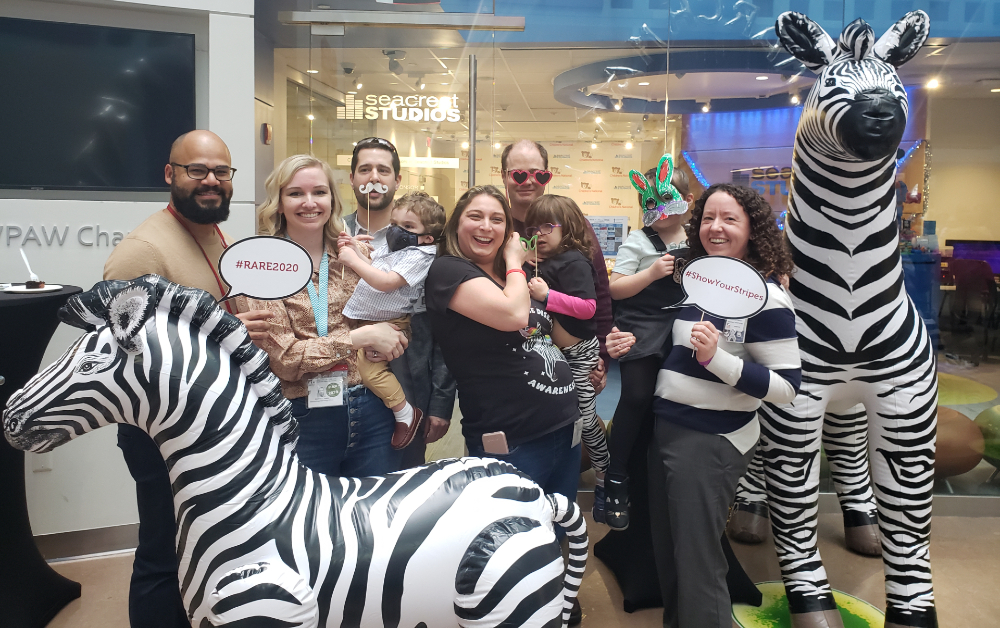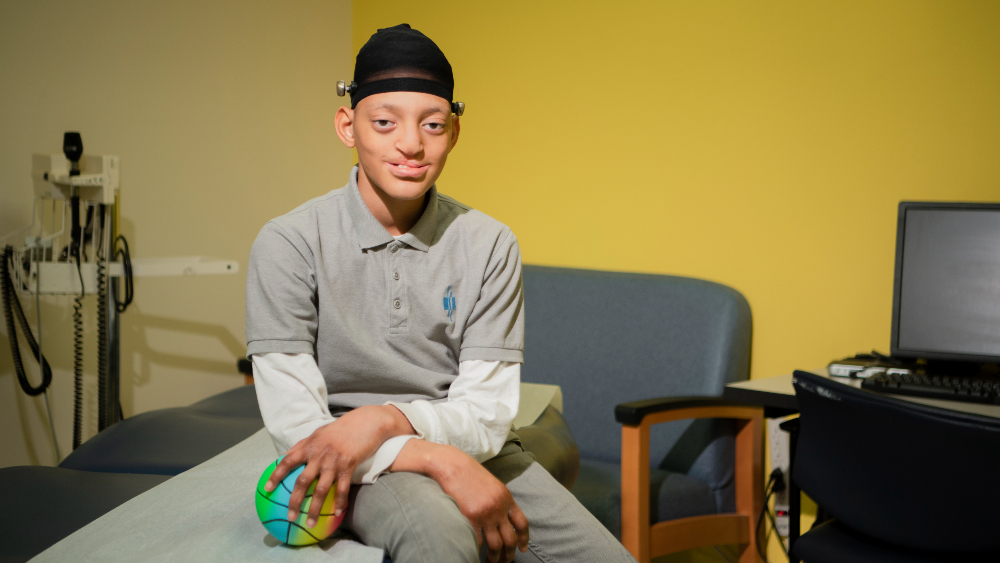Condition
Pediatric Multisuture Synostosis
What You Need to Know
Multisuture synostosis describes several rare types of craniosynostosis in which more than one suture (joint) between a baby’s skull bones fuses too early.
Key Symptoms
Common symptoms of multisuture synostosis may include:
- Misshaped head or face
- Missing, full, or bulging "soft spot" on the newborn's skull
- Bony ridges along the affected sutures
Diagnosis
Doctors typically diagnose multisuture synostosis by:
- X-rays to check for fused (missing) sutures or ridges along sutures
- CT scans
- Genetic tests
Treatment
- Surgery
- Cranial molding
Schedule an Appointment
Our pediatric specialists provide personalized care for your child’s physical, mental and emotional health needs. Meet our providers and schedule an appointment today.
What Is Multisuture Synostosis?
Multisuture synostosis describes several rare types of craniosynostosis in which more than one suture (joint) between a baby’s skull bones fuses too early. This congenital (present at birth) condition causes problems with brain growth and head shape. This is because the head stops growing in the areas where the sutures have fused, and expands abnormally in other areas.
Multisuture synostosis can occur by itself. If it occurs along with certain other symptoms, it is part of a craniofacial (head and facial) syndrome. If left untreated, multisuture synostosis can lead to serious complications, including:
- Head deformity, possibly severe and permanent
- Increased pressure on the brain
- Seizures
- Developmental delay
What Causes Multisuture Synostosis?
The causes of multisuture synostosis are not fully understood. Some cases can be caused by a genetic disorder that also affects other parts of the body, including:
- Carpenter syndrome: Premature fusion of sagittal (top of head, front to back) and both coronal (ear-to-ear) sutures, also abnormal growth of fingers and toes
- Crouzon syndrome: Premature fusion of both coronal (ear-to-ear) sutures
- Pfeiffer syndrome: Premature fusion of sagittal (top of head, front to back), coronal (ear-to-ear), and sagittal (top of head, front to back) sutures
- Saethre-Chotzen syndrome: Premature fusion of both coronal (ear-to-ear) and lambdoid (back of head) sutures
Types of Multisuture Synostosis
Because of the many possible ways that different skull sutures can fuse, there are more than 70 types of multisuture synostosis. These are extremely rare conditions, but the most common among them are:
- Cloverleaf deformity (or Kleeblattschädel): Premature fusion of coronal (ear-to-ear), lambdoid (across the back of the head), sagittal (top of head, front to back), and possibly other sutures
- Pansynostosis: Premature fusion of three or more (up to all) skull sutures
Symptoms of Multisuture Synostosis
With multisuture synostosis, the most noticeable symptom is a misshaped head or face. Other symptoms in newborns, infants, and young children happen because of increased pressure inside the skull, including:
- Missing, full, or bulging "soft spot" (fontanel) on the newborn's skull
- Bony ridges along the affected sutures
- Abnormalities in facial bones including forehead, eye sockets, cheekbones, and jaws
- Prominent blood vessels in the scalp
- Poor feeding or projectile vomiting
- Seizures
How Is Multisuture Synostosis Diagnosed?
To diagnose multisuture synostosis, your pediatrician will start by examining and measuring your baby’s skull. Further tests to confirm a diagnosis and check for related syndromes include:
- X-rays to check for fused (missing) sutures or ridges along sutures
- Diagnostic imaging, especially CT scans, to check for pressure inside the head, fused sutures, or ridges along sutures
- Genetic tests to check for syndromes that cause multisuture synostosis
Treatments for Multisuture Synostosis
Newborns and infants with multisuture synostosis may need more than one surgery to correct the skull’s shape. At Children’s National, we may recommend one or more of the following treatment options:
- Surgery before age 1, while the skull bones are relatively soft
- Minimally invasive surgery for infants younger than 3 months to open skull sutures for normal skull and brain growth
- Traditional surgery for infants 6 months or older to correct the skull’s shape
- Cranial (skull) molding using helmets to reshape the skull
Meet the Providers Who Treat Multisuture Synostosis
Departments that Treat Multisuture Synostosis

Rare Disease Institute - Genetics and Metabolism
Children's National Rare Disease Institute (CNRDI) is a first-of-its-kind center focused exclusively on advancing the care and treatment of children and adults with rare genetic diseases.

Help Kids and Make a Difference
Invest in future cures for some of life's most devastating diseases. Give today to help more children grow up stronger.








